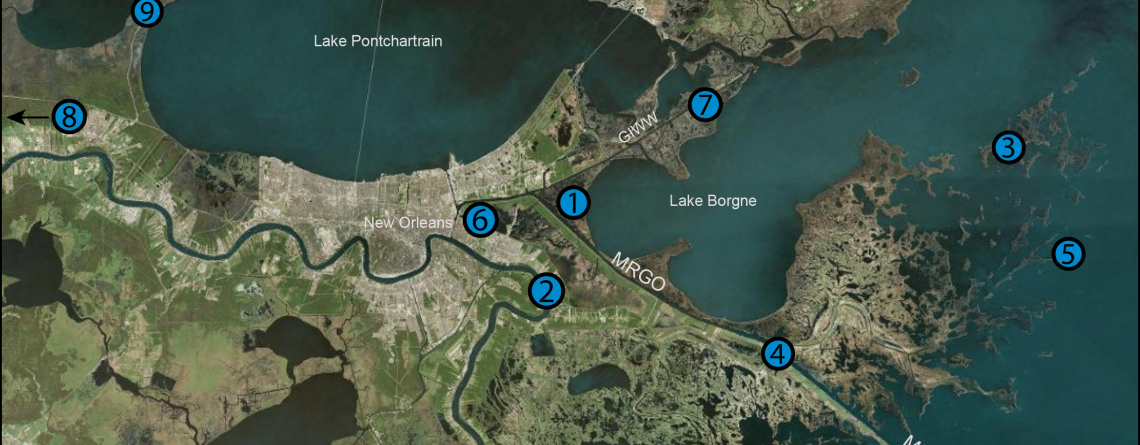HISTORY OF THE CHANNEL/IMPACTS
The Mississippi River Gulf Outlet (MRGO; commonly pronounced “Mister Go”) is a 76-mile long channel that was built to provide a navigation shortcut from the Gulf of Mexico to the heart of New Orleans. Authorized by Congress in 1956 and completed by the U.S. Army Corps of Engineers (the Corps) in 1968, the MRGO originally was 650 feet wide at the top and at least 36 feet deep.
MRGO MUST GO BACKGROUND:
The MRGO Must Go Coalition was founded in 2006 in response to Hurricanes Katrina and Rita. The Coalition’s mission is to ensure that the wetlands affected by the Mississippi River Gulf Outlet (MRGO) are carefully restored in a timely manner. The MRGO Must Go Coalition includes 17 local and national environmental, social justice and community organizations.
ACCOMPLISHMENTS & PROJECTS
The Mississippi River Gulf Outlet (MRGO; commonly pronounced “Mister Go”) is a 76-mile long channel that was built to provide a navigation shortcut from the Gulf of Mexico to the heart of New Orleans. Authorized by Congress in 1956 and completed by the U.S. Army Corps of Engineers (the Corps) in 1968, the MRGO originally was 650 feet wide at the top and at least 36 feet deep.

NEXT STEPS
MRGO ecosystem restoration - critical to protection of the Greater New Orleans Area – still waits for funding and implementation of keystone projects. Despite strong public support for implementation of the restoration plan, no funding has been appropriated to the Corps for further study or construction regarding ecosystem restoration in the MRGO impacted areas. Continuing conflicts between the Corps and the State of Louisiana over the State’s cost-share for restoration make it unlikely that the plan will be implemented in the foreseeable future. However, key MRGO projects are approved for RESTORE Act funding and are potential candidates for NRDA funding, presenting a major opportunity for the restoration effort.

REPORTS
MRGO ecosystem restoration - critical to protection of Since the MRGO Must Go Coalition’s beginning, in 2006, we’ve released recommendations and reports that have helped shape the restoration plans and processes for the MRGO ecosystem. Here are some of our highlights:


